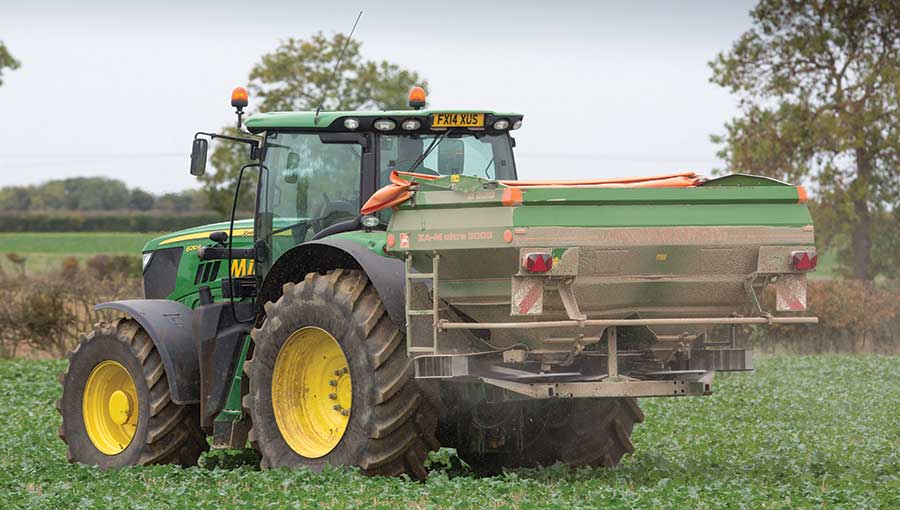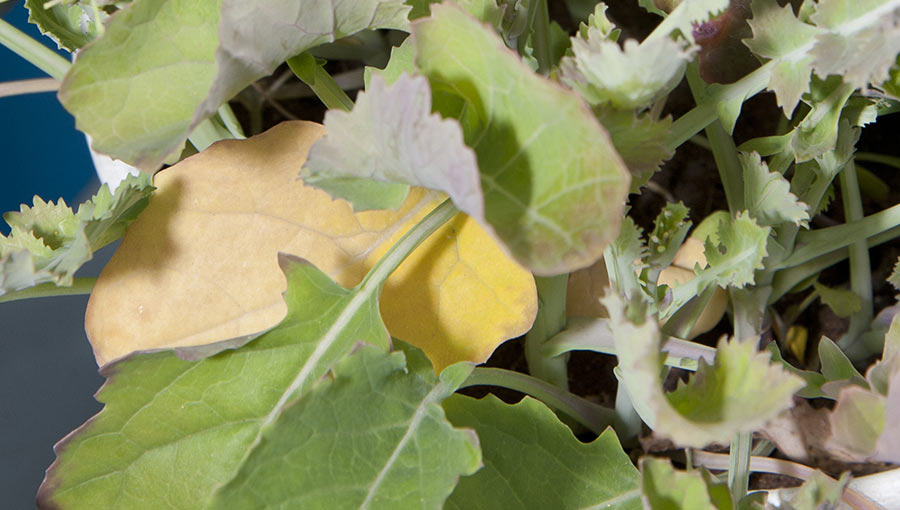Sulphur fertiliser advice for oilseed rape
 © Tim Scrivener
© Tim Scrivener Recommended rates for sulphur fertiliser applications have been nudged upwards after trial data showed crops may need a little bit extra.
Sulphur is an essential plant macronutrient and oilseed rape has a high S requirement – far greater than cereals – with a 5t/ha crop taking up 250kg of sulphur trioxide (SO3)/ha, according to a joint AHDB and ADAS report.
However, a 94% fall in emissions of atmospheric sulphur between 1970 and 2010 has led to an unanticipated deficiency in oilseed rape crops.
Alongside this, a change in farming practice towards using straight fertilisers that contain little or no sulphur has compounded the issue.
See also: Tips and pitfalls of using digestate as crop fertiliser
So with emissions of sulphur dioxide (SO2) predicted to fall further at a time when oilseed rape is only getting 10% of its requirements from the atmosphere, ensuring the crop has sufficient S will be even more important.
“All crops need sulphur,” says Lizzie Sagoo, soil scientist at ADAS. “This can come from the environment through mineralisation of organic sulphur and atmospheric deposition – minus any leaching loss. In a lot of situations this is enough, but if not, yield and quality can be hit.”
Since the early 1990s, the average application of S has increased from 8% of the total oilseed rape area to 70%, with around 84kg of sulphur trioxide/ha applied.
Even so, it has been speculated that the yield plateau of the past few decades is partially down to a sulphur deficiency.
In the worst cases, crops treated with sulphur saw a 4.4t/ha yield increase compared with those without. “The potential consequence of getting it wrong is clearly significant,” stresses Dr Sagoo.
As well as stifling yield, low sulphur can affect quality in oilseed rape, increasing the chlorophyll content in seeds and turning them green, which is problematic for crushers. In very deficient scenarios, it can also reduce oil content.
Deficiency susceptibility
Sulphur deficiency is most likely to occur when soils are light and sandy or calcareous, shallow, and low in organic matter. Crops on lighter-textured soils are more likely to be responsive to sulphur applications, explains Dr Sagoo.
“Light-textured sand will have more leaching and a lower organic matter content, so there will be less mineralisation.”
High rainfall is also a high risk. In sulphate form (SO4), S is more mobile in the soil and so more likely to leach.
“Warm autumn soil aids mineralisation of organic matter to release sulphate. If followed by a wet winter, sulphate can leach out and be lost,” says Agrii’s Jim Carswell.
Application rates and timings
After recent trials, a project by AHDB and ADAS concluded that only a small revision is needed to the guidelines in AHDB’s Nutrient Management Guide (RB209), increasing the recommended application from 50-75kg sulphur trioxide/ha, to 50-80kg/ha.
Applying a nitrogen + sulphur top dressing in the spring is a common way to get S into the crop, says Mr Carswell.
“There are many fertiliser products with differing nutrient analyses, but typically farmers would aim to apply 120kg N/ha + 70kg sulphur trioxide/ha by early March and then a balance of 80kg N/ha + 20kg sulphur trioxide/ha. Any more after that would be a straight N product.”
Alternatively, applying all the sulphur in one pass as polysulphate will provide sulphur over a period of around 50 days, he explains.
“This needs to be applied early in the season (mid/late February ideally) to allow dissolution of the polyhalite crystals, releasing sulphate for crop uptake.”
Sulphur only needs to be put on when the supply from the environment isn’t sufficient,” says Dr Sagoo. If the crop has enough S already, there won’t be a yield response to applying more, making it a wasteful exercise.
Inorganic fertilisers and organic manures
It is possible to supplement sulphur using organic manures, but it’s vital to be aware of their nutrient content. AHDB has updated the manure guidance in its Nutrient Management Guide (RB209).
It’s important to calculate how much S will be available from the manure, how much S an autumn application will supply, and whether further bagged fertiliser will be required.
Tips on monitoring soil and crops for deficiency

OSR leaves showing sulphur deficiency © FLPA/REX/Shutterstock
Though sulphur deficiency does produce physical symptoms in a crop, by the time these are visible the crop is already likely to have lost potential yield and it may be too late to do anything, warns Agrii’s Jim Carswell.
Symptoms include:
- A stunted, thinner crop
- Diffuse yellowing of the leaves
- Pale flowers
- A reduced number of pods.
A typical loss of 0.5t/ha from S deficiency would not be visibly noticeable, points out Lizzie Sagoo, soil scientist at ADAS. “There needs to have been a significant loss to have any chance of seeing a deficiency.”
Soil texture is the most robust way to tell if deficiency is likely to occur, with the risk matrix in RB209 equally applicable to oilseed rape as cereals, explains Dr Sagoo. “Anything high or medium risk should have sulphur applied,” she advises.
There are other methods to diagnose soil status, including routine soil analysis, although this isn’t always accurate. A more reliable test is to tissue sample.
The malate sulphate test gives a snapshot of S content – but sometimes deficiency can be transient, so testing two weeks apart will identify permanent versus transient deficiencies.
Timing of samples is very important, with diagnostics at late stem extension allowing for corrective measures to be made as late as the yellow bud growth stage.

